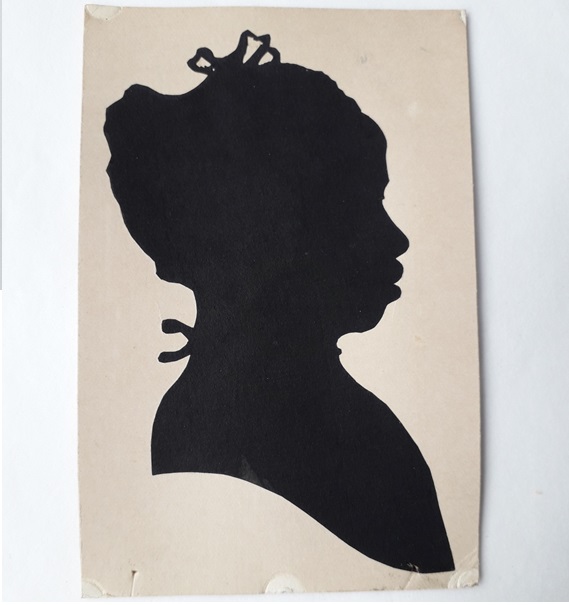The Black Girl’s Silhouette
Posted on: 29 October 2021 by Amanda Draper, Curator of Art & Exhibitions and Andrew Williams, Collections Assistant in 2021
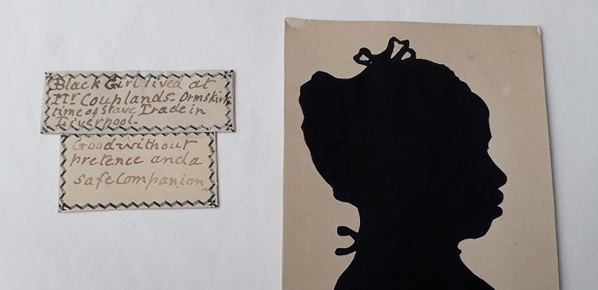
In 1770s Ormskirk, a young Black woman sat still while a visitor cut paper in the shape of her profile. We have been left with her likeness, a note about her character but not her name or life story, so our research about her is ongoing. Here’s what we know so far …
The Silhouette Portrait
The Black Girl
Because, as yet, we don’t know the sitter’s name, we will describe her as the Black Girl. She sits with her right profile towards us. She looks youthful, perhaps a teenager or just entering her early twenties; not a child. Her hair is neatly tied up under a small cap secured with a ribbon. Another ribbon is around her neck and tied at the back, otherwise her clothes appear plain without collar or frills. The very nature of silhouette portraits is that they are created from black paper so, in truth, we probably only realise the young woman’s racial identity because of a note accompanying her image which reads:
Black Girl lived at Mr Couplands, Ormskirk … time of the Slave Trade in Liverpool
And we are told something of her character in another note fixed underneath the first:
Good without pretence and a safe companion
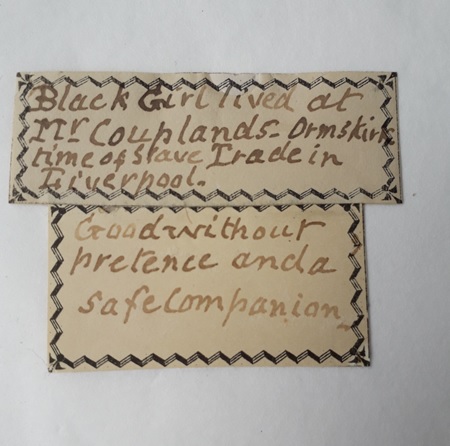
Labels accompanying the silhouette
Labelling the Black Girl
These labels are, of course, extremely loaded and potent, revealing much about historical attitudes towards Black people. We believe they were written by Miss Isabella Gregson when the silhouette portrait was put on display alongside many others in her Gregson Memorial Institute on Garmoyle Road, Wavertree. The building was opened in 1897 as a memorial to her family, as an educational space and to house the eclectic collection of her grandfather, Matthew Gregson. More of them later, but it does indicate that the story behind the Black Girl had been told down the generations of the Gregson family, although her name, if ever recorded, had been lost.
We are told the Black Girl lived in the Lancashire town of Ormskirk in the time of the slave trade in Liverpool. The two places are about 14 miles apart. This leads us to presume that she arrived from Africa into Liverpool as a result of slave trading, but it is not certain. She may have travelled from the Caribbean through a connection to a plantation owner. Or she may have been born in Britain to one or more Black parents settled here.
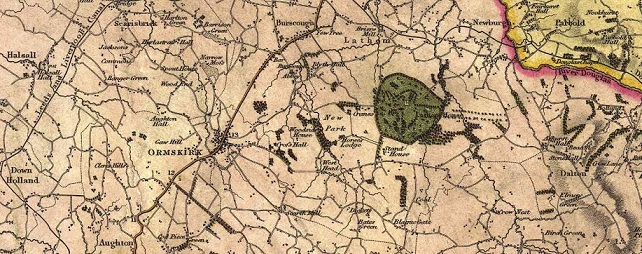
Greenwood's Map of Lancashire, 1818, showing Ormskirk
We are told she was ‘good’ and therefore conformed to a set of behaviours expected of her by the family she lived with and society in general. We are told the Black Girl was a ‘safe companion’. This has the clearly offensive connotation that being Black indicated violent or otherwise dangerous tendencies. Yet the term ‘companion’ could also mean that she was more than a servant within the household. The role of ‘companion’, usually to a female of the family, was a recognised paid position which involved providing engaging company and accompanying to social events. Even if she were a servant, the description seems to indicate that the Black Girl spent more time with family members than a standard employee.
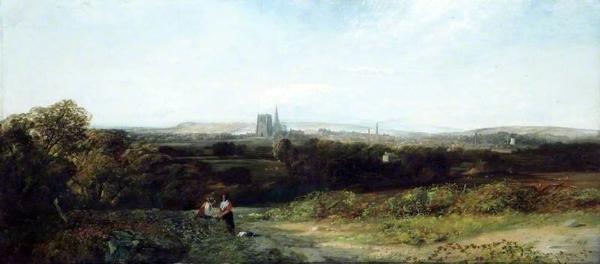
Robert Tonge: View of Ormskirk, 1848 (oil on canvas) Collection of The Atkinson Art Gallery, Southport
The Couplands of Ormskirk
The VG&M holds twelve silhouettes depicting members of the Coupland family of Ormskirk. As part of our research into the Black Girl’s identity we contacted the Ormskirk and District Family History Society who, unfortunately, had no record of her but their Chair, Kate Hunt, provided useful contextual information about the family.
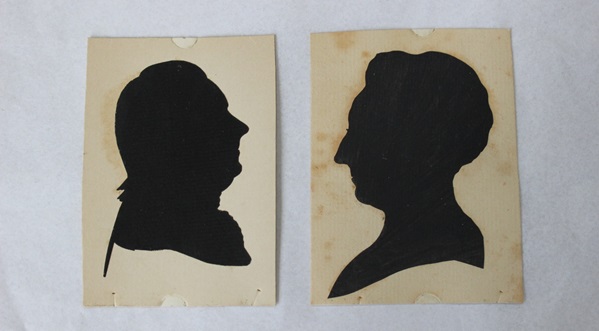
Silhouettes of Richard and Elizabeth Coupland, c.1775. Probably by Matthew Gregson
The head of the household was Richard Coupland (1733–91), a leather dealer. He married Elizabeth Aldred from Preston and together they had seven children, although only three survived to adulthood. At the time the silhouettes were created the family lived in Church Street, Ormskirk. Elizabeth, who died in 1777, is included in the silhouettes so they were probably created in the mid-1770s. Richard Coupland owned several properties including a dyer’s shop, and when he died in 1791 his wealth was calculated at just under £5,000 (around £800,000 at today’s valuation). So we know the Black Girl lived in a small Lancashire town in the busy household of a wealthy businessman and his family.
What is a silhouette?
Before cameras, having the outline of your features or figure cut out of black paper and mounted on light card was a cheap and quick way of getting a portrait made. They were known as a ‘shade’, ‘profile’ or ‘shadow portraits’ until they were linked to an unpopular French finance minister called Etienne de Silhouette in the mid-1700s. Either cutting away excess or doing things on the cheap led to this type of portrait being permanently associated with Monsieur de Silhouette.
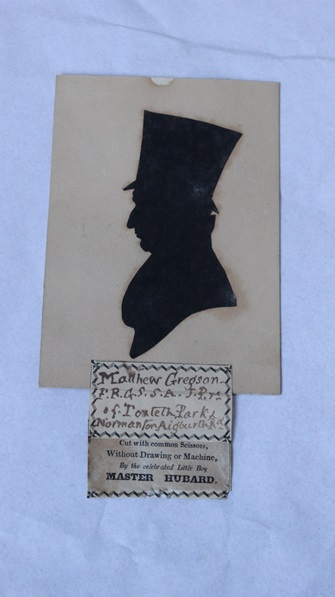
Silhouette of Matthew Gregson Jnr by 'Master Hubard', c.1820
There were professional ‘shadow portrait’ artists who would be paid to attend homes and create silhouettes of family members and guests. One practitioner was ‘Master Hubard’, otherwise known as William James Hubard (1807 – 1862), a boy-wonder of the silhouette-cutting world who later worked in America. Examples by him are in the Gregson Collection and above is his portrait of Matthew Gregson Junior (shown above), who was father of Isabella Gregson and son of Matthew Gregson Senior.
Cutting silhouettes could also be a hobby for anybody with artistic flair. We know that Matthew Gregson Senior was adept at it and believe most of the silhouettes in the Gregson Collection are by him. It was no doubt his party piece when meeting up with family and friends.
How the Black Girl’s silhouette arrived at the VG&M
Matthew Gregson Senior (1749 – 1824) is likely to be the person who cut the Black Girl’s silhouette. He was an upholsterer by trade who amassed a considerable property portfolio, lived in the Wavertree area of Liverpool and also owned Overton Hall in Cheshire. Gregson was the son of a shipbuilder but current research shows no evident family link to the notorious Liverpool slave trader William Gregson (1721 – 1800). Gregson had a deep passion for the history of Lancashire and avidly collected books, pictures and historical artefacts related to the subject, leading to him being widely described as an antiquary. He also encouraged education in Liverpool, supporting the Bluecoat School, Liverpool Library and Liverpool Royal Institution amongst others. Gregson was lauded for his learning and charitable works and turned down a knighthood. He died aged 75 after falling from his library steps, after which a great part of his collection was sold off, but not the silhouettes.
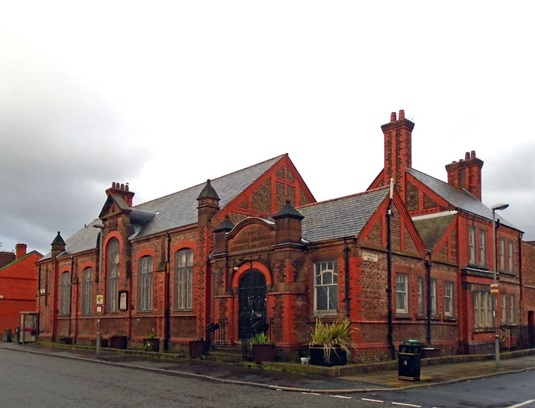
Gregson Memorial Institute in Wavertree, Liverpool (Image: Wikipedia Creative Commons)
His mantle appears to have been picked up by his unmarried grand-daughter Isabella Gregson, whose short-lived Gregson Memorial Institute showcased much of the Gregson collection remaining in the family. The Institute quickly proved unviable and in 1906 the building and contents were offered to the University, having been turned down by the Town Council. The building was used by the Liverpool Education Authority and then bought by them in 1936. The collections were transferred to the University’s new Harold Cohen Library in 1938 which had a dedicated ‘Gregson Room’. The art-based collections were transferred into the University Art Collections in the late 1980s.
The Gregson Memorial Institute building is now Grade II listed and hosts community events. The Black Girl’s silhouette, along with the rest of the Gregson Collection of silhouettes, is housed in the VG&M and available to view on request. We continue to search for her true identity and ask that you get in touch if you can help us.
Further Information
https://libguides.liverpool.ac.uk/library/sca/gregsonmemorialinstitute
https://historicengland.org.uk/listing/the-list/list-entry/1392407
https://www.facebook.com/gregsonliverpool/about/
Keywords: Black Girl, Silhouette, Matthew Gregson, Richard Coupland, Gregson Memorial Institute, Ormskirk, Liverpool.
